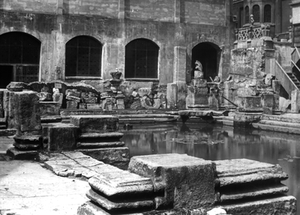HMJ Underhill Archive
Deborah Harlan, Megan Price, 2004. (updated 2013) https://doi.org/10.5284/1000234. How to cite using this DOI
Data copyright © University of Oxford unless otherwise stated
This work is licensed under the ADS Terms of Use and Access.
Primary contact
Prof
Helena
Hamerow
Institute of Archaeology
University of Oxford
36 Beaumont St
Oxford
OX1 2PG
England
Tel: 01865 278240
Fax: 01865 278254
Resource identifiers
- ADS Collection: 395
- DOI:https://doi.org/10.5284/1000234
- How to cite using this DOI
Overview
Information | Background | HMJ Underhill | Slides | Bibliography | About
Background
Henry Michael John Underhill (1855-1920) was an Oxford antiquarian and magic lantern slide painter who had wide-ranging interests: entomology and microscopy, the anthropology of folk-tales and British archaeology from prehistory to the vernacular architecture of windmills. For many years he was a prominent member of two Oxford amateur societies which served as vehicles for intellectual communication between interested Oxford citizens and members of the University: The Oxfordshire Natural History Society and Field Club, and The Oxford Camera Club.

Underhill died in 1920. His family donated a number of his academic slides, sketchbooks and photographs to the University of Oxford. Underhill's slides on antiquarian subjects went to the Ashmolean Museum and were incorporated into the teaching slide library. In 1962, the bulk of this teaching collection was transferred to the Institute of Archaeology. Here it remained virtually undiscovered until 2001. The slides owned by the Institute of Archaeology are the subject of this web-site.
In 1895 Henry Underhill delivered two lectures, The Great Stone Circles of Britain (12 February) and Some Buried Roman Cities of Britain (1 July) to the Oxfordshire Natural History Society. These he illustrated with hand-painted lantern slides based on personal sketches, his own photographs and antiquarian and contemporary publications. The lectures were reported in Jackson's Oxford Journal and the Oxford Chronicle, though no details of the talks appear to have survived. After 1895, Underhill concentrated on the art and technology of photography and was an active member of the Oxford Camera Club. However, in 1907, he painted his last set of slides on Windmills. The extant slides from these three lectures are presented here.
The remaining Underhill material in Oxford University is in the Bodleian Library Modern Manuscripts Collection, the Museum of the History of Science, The University Museum of Natural History and the Department of the History of Art. In addition, there are Underhill collections in The Centre for Oxfordshire Studies and the Archives of the Folklore Society.





